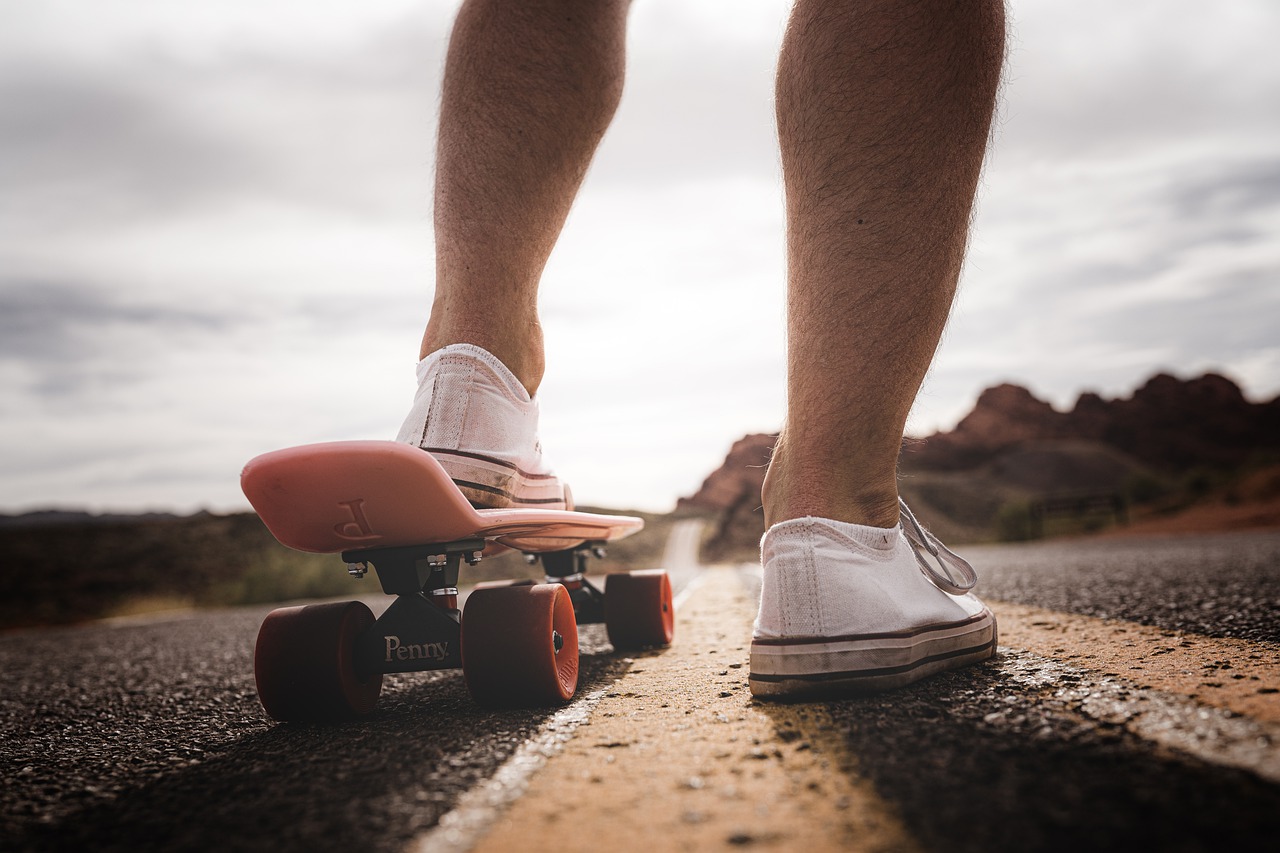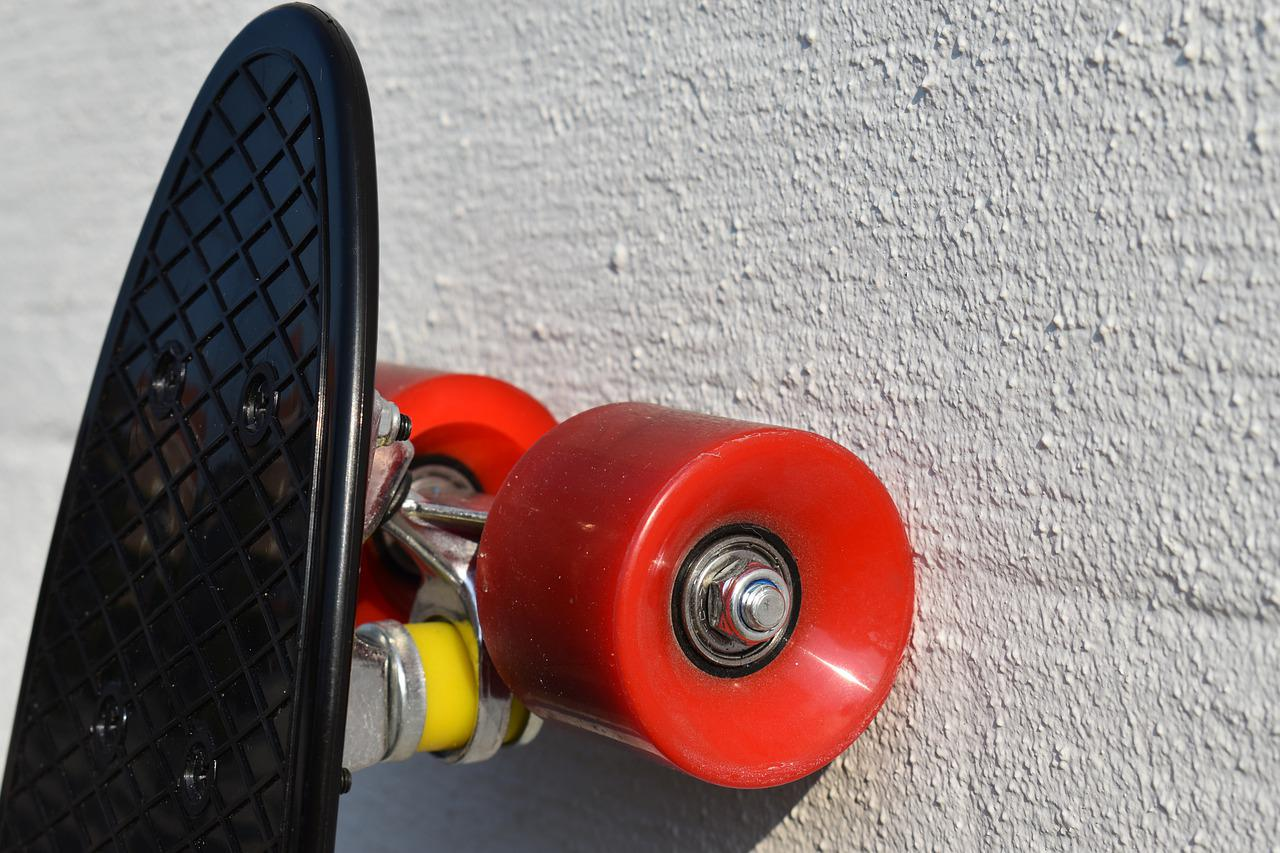Are Penny Boards Good for Starters?

Disclosure:
Penny Boards are small cruiser boards (mini cruisers). They are fun, easy to carry around and have a nice variety of cool designs. Today you will find out if Penny Boards are overrated or not.
Penny boards come in three sizes, 32, 27, and 22. This post will refer to the most popular size, the 22 variant. Penny boards are more suited for people with smaller feet; even people with small feet will notice their feet sticking out on both sides.
Even though having such a small board has its downsides, there are a lot of upsides to owning a Penny board.
What is a Penny Board
Penny boards or Penny skateboards is an Australian based company founded in 2010 by Ben Mackay. They have three different sizes you can choose from, the 22, 27, and 32.
The deck on Penny boards is made entirely of plastic; they don't have grip tape, so they are more slippery than regular cruiser boards, but as an alternative, Penny boards have a waffle grip pattern on the top of the board.
The Penny board shape is classic; it looks like some classic skateboards from 1960 and 1970.
Penny boards are narrow; at the widest, they are about 6-7. They have a pointed nose, and it becomes wider the closer to the middle you are, and then it becomes narrower again near the tail.
It has a kicktail, which all mini cruisers should have, and the front of the board is flat because the Penny board is mainly designed for cruising.
Since Penny skateboards were founded, many lookalike plastic mini cruisers have come to the market. Unfortunately, most off-brand Penny boards lack quality, so If you want a plastic skateboard, you should go for the original.
You usually order Penny boards as a complete skateboard, but you can also order each part separately. They have soft wheels 59mm diameter polyurethane with a plastic core, and they use ABEC 7 bearings, a high-quality bearing. The trucks on a penny board are 3 wide; they are designed to work well with the small deck; this makes it possible to turn sharply and precisely.
My Experience With Using a Penny Board
I clearly remember the day I got my first penny board, it was my ninth birthday, and I couldn't wait to try it. It was the first board I owned, and I quickly got attached to it. Since I was a pretty small child, it was perfect for me.
The board was small, so balancing it was hard, but I quickly got used to it with time and dedication. Because of the large soft wheels, I could travel long distances efficiently, and traveling to school was always a fun experience.
As I got older, I started to get an interest in skateboard tricks, There were some tricks that I learned for my Penny board, but there was only so much I could learn before it was too difficult. I didn't have the money to buy a regular skateboard, so I decided to master the basics of cruising and having fun with manuals.
At this point, I've had my board for four years, and it was still in excellent condition; this was nice considering I didn't have plans to get a new one.
One of the key reasons I liked my Penny board so much was that it's effortless to carry around. If I couldn't ride it, I just carried it; this was convenient since I wanted to cruise on my board any chance I got.
When I was 14, I finally decided to buy a new Penny board. I was pretty fond of my plastic board and wasn't ready to get a new type yet. I got a new one because the wheels on my other board had large cracks, and one of the bearings got destroyed because of rust.
I was 16 when I decided that it was time to get a regular cruiser board, I didn't want to because all I had known was Penny boards, but I couldn't say that they were the best unless I had tried everything. My discovery was shocking; Penny boards aren't the best.
They are perfect for children or if you don't want to drag a bigger board around, but if you want a board that can take you to the next level, you need to get something like a Landyachtz cruiser board.
The transition from small boards to a regular-sized one with wood decks was weird, but I'm glad I made the choice. I still choose to use my Penny board from time to time, but I probably won't go back.
What are Penny Boards Used for?

Penny Boards are designed as cruiser boards, which are great for commuting. They are small, light, and easy to carry around; if you want to, you can even fit them in your backpack.
They have large soft wheels, ideal for cruiser boards; with them, you can easily ride over cracks or small curbs without a problem. There would have been a risk of falling on a regular skateboard in these scenarios. If you don't want to risk it, you should probably lift the tail to avoid eating dirt.
Since the bearings are good and the wheels are big and soft, you can travel far with a single push, saving you a lot of energy.
If you are taking a quick trip, a penny board is your best friend; if you end up not using your board much, it's at least not heavy to carry around with you.
Can you learn tricks on a Penny board?
The short answer is yes, but it is not worth it. A Penny board is made for cruising, leaning tricks are possible, but if you want to do technical tricks, you should try original skateboards.
You may have seen people do tricks like a kickflip or ollie with Penny boards, but the chances are that they didn't learn these tricks on a Penny board.
You can learn most tricks that don't require your board to leave the ground; some examples are kickturns, manuals, and caveman. If you go to skate parks, you can have fun by just riding around the track, but there is a limit to what you can do.
Are Penny Boards Good for Beginners?
If Penny boards are suitable for beginners depends on your intentions. As a cruiser board, I would say that they are great; since they are made of plastic, you don't need to worry about things like a waterlogged skateboard
Pros and Cons of Owning a Penny Board
If you choose to ride a Penny board, you will find that there are pros and cons. The 22 is a smaller penny board, so riding this will feel different from other mini cruisers. Here are some pros and cons for Penny boards.
Pros
Easy to Carry
If you buy penny boards, you will find it easy to take the board with you. In addition, the size makes it possible to fit in backpacks; if you need to carry it, it won't be a hassle.
Its Made of Plastic
A cool feature of a penny skateboard is that it's made of plastic, which makes it better for skating in the rain, and the board is also durable. I once saw a truck run over a Penny board, and it only bounced away with minor damages.
Nice Bearings
The bearings on the board are high quality and last a long time; since the bearings are good, you can achieve high speeds.
Cons
The size
The board size can make it hard to balance on; if you ride at high speeds, getting a speed wobble often happens. With less space, you have less control; on a regular cruiser board, there usually is a broader platform.
it is also harder to perform tricks with a pennyboard.
No grip tape
This makes the board slippery; if you had grip tape, you would have more control. Doing tricks on a penny board also becomes more challenging.
A regular cruiser is better
Regular cruiser boards are better; the only factor in Pennys is that they are easier to carry around. Skating through crowds can be easier since the size is smaller, but this is it.
Are Penny Boards Cheaper than Regular Cruiser Boards?
Buying a Penny board is not cheaper. On Amazon, you can get Penny boards from 90$ to 120$. A high-quality board from Landyachtz could go from 120$ to 150$.
But as I stated earlier, Penny boards are really fun, and if you have the money for them, I recommend getting one. To check out the prices, click here
Conclusion
If your intention is to learn tricks like a kickflip, ollie, trey flip or skate ramps, you should go for a regular skateboard.
If you want to cruise around and get the feel of riding a board, then Penny boards might be a good choice. If you pick the 32 size, you might be able to do simple tricks like ollies aswell.
Disclosure:
